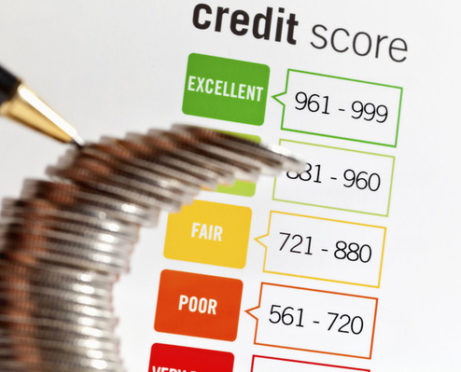
Art by Jonan Everett
I consider myself a very lucky person. While I have personally dealt with fire, tornadoes, and flooding, the loss to my property was never so bad that my home was uninhabitable. Plus, we’ve had only a few injuries to deal with. One of the things that I credit for how we’ve been able to minimize damage is our preparedness. There is no substitute for having a natural disaster plan long before you need one.
Disaster planning is unique to where you live in the United States. I’ve never had to worry about hurricanes, earthquakes, or mudslides, but I have tornadoes in my area every year. There are also those disasters that aren’t location dependent and can happen to anyone, such as fires and floods.
Are you prepared for a natural disaster?
My guess is that the answer is probably no. In fact, a recent survey by YouGov found that 41 percent of respondents felt unprepared for a disaster, meaning that lives may be lost when trouble comes.
It’s not surprising that many people cite finances as a reason for not having a disaster plan. Internet ads for $200 “bug-out bags” and dried-food stockpiles have many people believing that you must save up a small fortune to afford a lifesaving evacuation or shelter-in-place plan.
In reality, most actionable strategies cost almost nothing, and the biggest investment you’ll make is in time. Here’s the truth about what preparedness actually costs, along with some tips for how to make a disaster plan and put it in place today.
The Basics of a Go Bag
You may have heard the terms go bag or bug-out bag and dismissed them as tinfoil-hat nonsense for Doomsday-prepper types.
The fact is that everyone needs one of these lifesaving packs. They don’t need to be anything special.
They’re designed to keep you healthy and safe for a minimum of 72 hours and should be able to be carried with you wherever you need to go. We do this in my family by designating one cheap backpack (bought during back-to-school clearance sales for about $10) for each family member, and we hang these packs on hooks near the main exit of our home so that they are accessible to everyone.
Whenever possible, the items in our go bags are from discount or dollar stores. The contents include:
- One change of clothes
- Bottle of water — 50 cents
- Energy bar or nutritious and filling snack — $1
- Flashlight — $5
- Chargers for personal devices and cell phones — $5
- Dust mask — 30 cents
- Ball cap or hat — $6
- Small book, toy, or personal possession that brings comfort (comic book, small stuffed toy, portable chess game)
Total cost for backpack and extras per person: about $30.
“Grown Up” Go Bags
My husband and I also have “grown up” packs that contain the most important items for the whole family. These are filled with:
- Medications (the basics, plus three days of any prescriptions needed by family members or pets)
- Documents, such as extra birth certificates and other important forms of identification
- NOAA weather radio with tone alert, powered by a hand crank or extra batteries — $20
- Two-way radios — $40
- Extra batteries — $10
- Sunscreen — $5
- First aid kit — $30
- Baby wipes — $4
- Garbage bags with ties, for waste disposal — $1
- Multipurpose utility knife with can opener, such as a Leatherman — $30
- Cash — $100 to $200
- Emergency credit card
- Toilet paper — $1
- Duct tape — $3
- Bungee cords — $7
- Printed versions of local maps — free from visitor centers
Total cost for each bag: $250 to $300.
An Extra Tote
We also have a plastic tote that carries the remainder of what we would need for three days, including:
- One gallon of water per person per day for at least three days
- Nonperishable nutritious food for three days
Total cost: $15 per person, plus the cost of tote. (The average family of four can probably get by with one 18-gallon tote from a big-box store, priced at $10.)
(We mean insurance, silly.)
How to Make a Disaster Plan for Babies and Pets
If you have pets, you’ll need to prepare a go bag for them as well. Add extra water to the main tote for them, and have a small bag with a few days of their food, their meds, a leash and/or collar, and some kind of collapsible water dish and food bowl. Some people pack a sweater or even booties in case the animal will need to walk through bad weather and is too large to be carried. Bear in mind that even if your animal can be carried, you may be carrying several of your own children and packs, so it’s best to equip your animals to walk on a leash if possible.
Babies add another layer of difficulty to preparation. You’ll want to include diapers, baby formula, and extra baby bottles in the tote. Nursing moms have it a bit easier, but it’s still a good idea to bring formula, just in case the mother is not in a condition to nurse due to injury or illness. One product that we keep for emergencies that works for babies and toddlers is freeze-dried baby food. While a bit more costly, it mixes up nicely (and I actually keep some on hand for traveling on a plane, too).
Cost-Saving Tips for Creating a Disaster Plan
If you have a large family — as I do — it can be a bit overwhelming to try to plan and pay for items for everyone. I recommend that you take things slowly, adding a few items to each week’s shopping list until you have everything. Start with the most important ones — such as water — first. Then add the “nice to haves,” such as a two-way radio, when the budget allows. You can also buy items on clearance and hit dollar stores and shopping sites like Woot.com and 13 Deals. These particular sites often offer survival gear — gloves, masks, knives, flashlights, and other tactical items — for pretty cheap.
While I have shopped for dried food from “preparedness” dealers, I did so when I wanted something specific and they had sales. These sites generally charge 30 percent more for the same brands that you can buy from Walmart or Sam’s Club. In fact, Augason Farms dried foods are the same products we use to stock our pantry for everyday cooking, and we put a few of our favorite items into our go-packs when we can afford it.
Note, however, that dried foods use quite a bit of your water stores and need heat to be properly prepared. Most people are going to be too stressed during a disaster to want to deal with this, and will most likely opt for energy bars and other fully prepared items. This is okay and recommended for people who are not used to cooking with “emergency foods” on a regular basis. The middle of an evacuation is not the time to test your hand at whipping up dehydrated chicken tortillas for the first time!
A Note on Water
Bottled water is cheap, provided you buy it before a disaster. You only have to check the local news during a large-scale flood or a hurricane to see that far too many people fail to follow this advice and wait until the last minute to get water.
Water should be the absolute most important thing in your preparedness kit.
Generic bottled water will do fine — just buy it before the situation is dire so that you don’t get price gouged or have to fight people for it. Many water products come with an expiration date on the bottle. However, if the water is in its original packaging and the container is still sealed and undamaged, it never really expires. There is no need to replace unopened water bottles that have reached their best-by date.
I also recommend having a few LifeStraws ($15) in your go bag in case something happens and you can’t carry that much water, or you need more than three days’ worth. These make most water sources potable and will be much appreciated if you find yourself running out.
What If You’ve Already Been Affected?
Despite our good intentions, it’s not always possible to plan for every kind of disaster. Those affected by large-scale disasters may find resources scarce and unable to sustain them for long periods of time. In these instances, it is wise to check into available funds from FEMA and other disaster relief groups. You can search with this FEMA tool to see if your area qualifies for assistance. In addition to pointing you in the direction of immediate help, the tool will show direct you to grants and loans to rebuild your home or business, especially in cases when your insurance doesn’t cover the loss.










